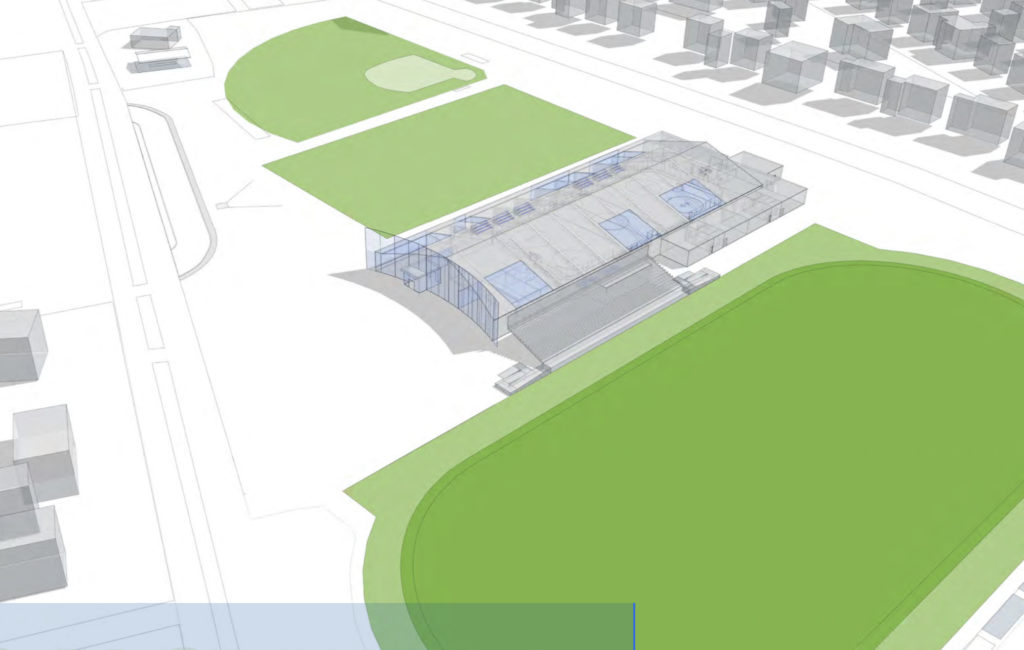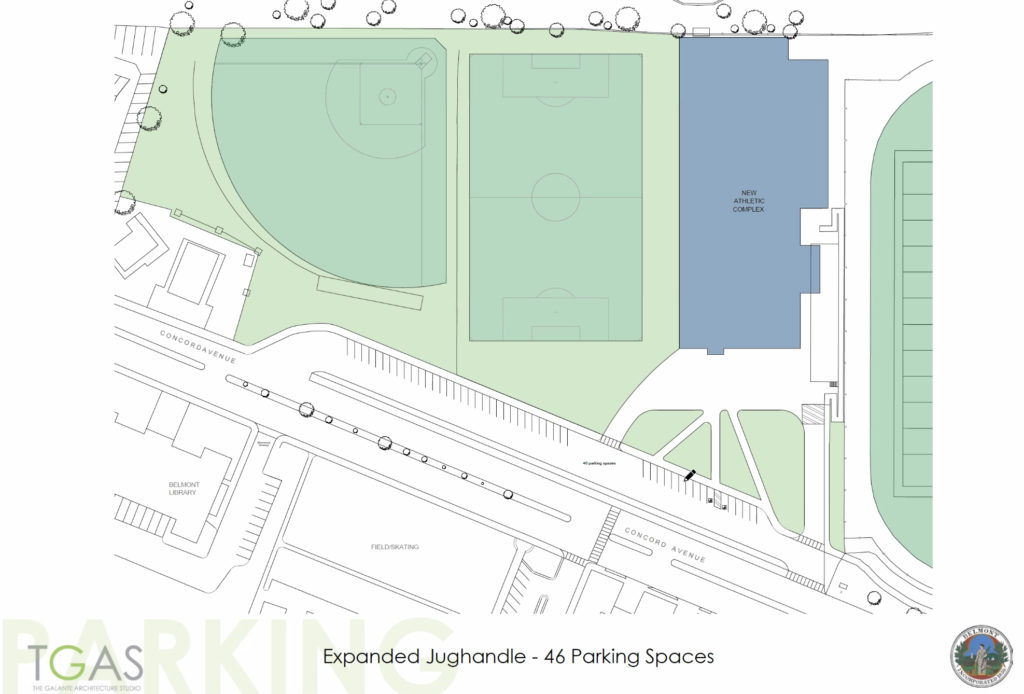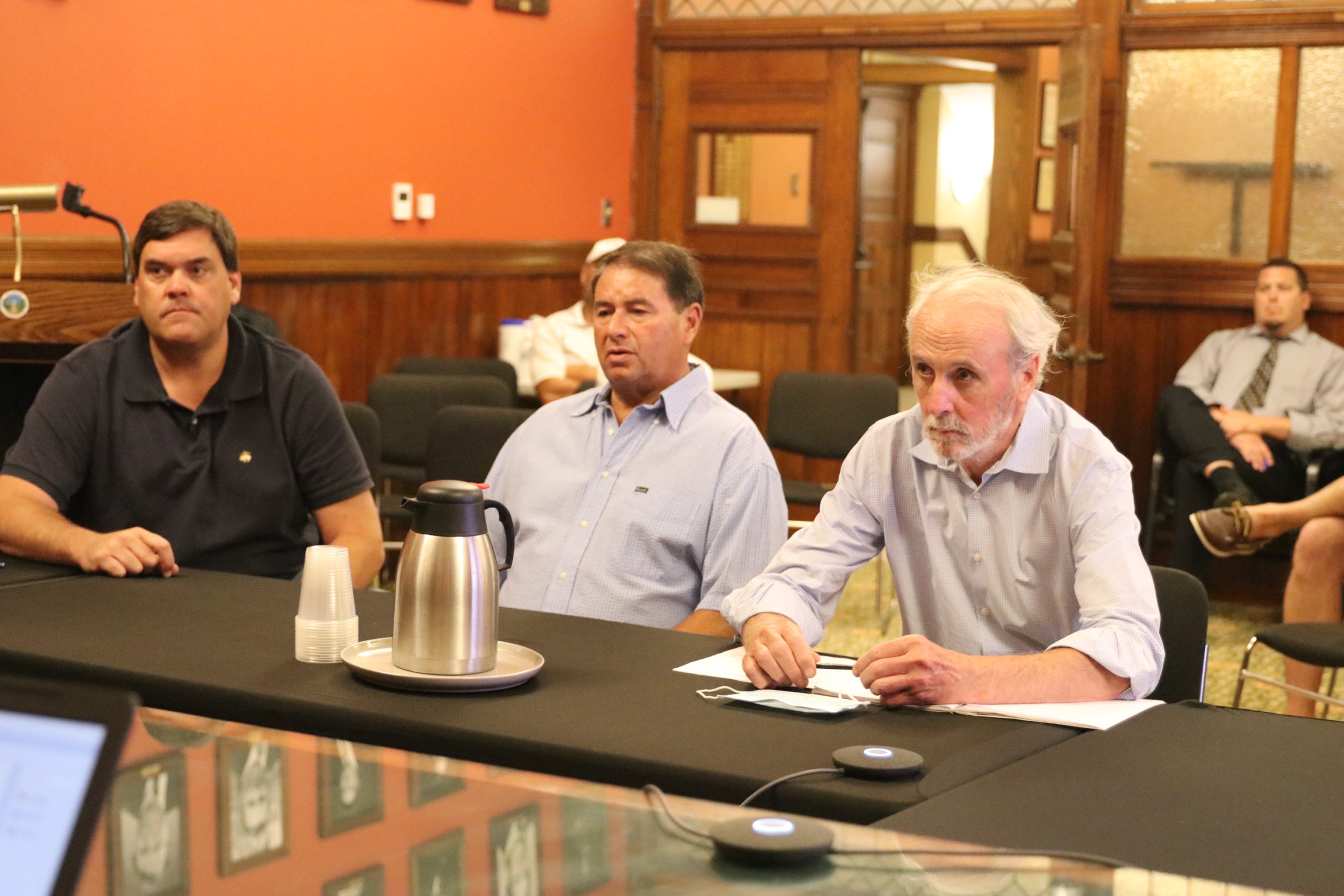Photo: Members of the Municipal Skating Rink Building Committee; Frank French, Jr., Dante Muzziolioi and Chair Mark Haley before the Belmont Select Board
The Belmont Select Board voted unanimously Monday to place a debt exclusion before voters this November to finance a new municipal skating rink to replace the half-century old Skip Viglirolo Skating Rink on Concord Avenue. The board’s vote comes a week after it OK’d a similar debt exclusion measure to construct a new $39.5 million public library on the same Nov. 8 ballot.
While having heard concerns of placing a pair of debt exclusion projects on the same ballot, “I’m ready to move forward with an exclusive vote this fall,” said Mark Paolillo, chair of the board at a hybrid virtual/live meeting held at Town Hall Monday. “I think there’s support for both projects. There’s a need for both.”
While most building committees tend to see their work like running a marathon – a long, slow and steady run – the Municipal Skating Rink Building Committee took its inspiration from Usain Bolt, having taken up the mantel of the temporary building committee on June 13 with a month and a half deadline to produce a project with a location, scope and budget that would pass muster with the Select Board to get on the ballot in 2022.

“Honestly, I wasn’t sure you’d actually pull it together in time,” said Adam Dash of the Board. “And you actually did kind of put it together in time. I’m very impressed.”
“I feel that we are ready,” said Mark Haley, chair of the Municipal Skating Rink Building Committee as it voted earlier on Monday, 9 to 2 with one absence, for the project to go before voters in November. “We asked that specific question of [project architect Ted Galante] and he said we had come a long way in two to three months since we’ve been at it and we have a lot of momentum.”
Before the board meeting, the committee met to finalize several aspects of the project, such as the new rink’s location, adding 40,000 sq,-ft. of solar panels and settling on the building’s program, as well as presenting a broad, preliminary budget.
With the current volatility in construction, the committee provided a project budget with a low and a high range. The core construction costs – for the renovated rink and associated DPW space, locker rooms, storage, Harris Field lockers, the demolition of the White Field House and solar panels – is estimated today at $17,275,000.

Where the numbers differs between the high and low estimates is with general conditions (costs incurred during a project that isn’t involved in the actual construction such as administrative costs, renting a jobsite trailer, and cleaning up the location) and, design and owners contingencies. The high end estimation for general conditions is at 18 percent of the base price tag with the low end at six percent. High end design contingency -the amount of money set aside in a budget to address unforeseen circumstances – is 25 percent compared to eight percent at the low end.
With inflation pegged at 12.6 percent over two years and soft costs ranging from $6 million to $5 million, the total project cost with the high estimation is $34,730,806 and on the low side, $27,764,798, a difference of just under $7 million ($6,966,008). Split the difference and the average of the high and low projections calculates to $31.2 million, which Dash said is the likely price tag.
“I think the high is pretty high, the low a little low,” said Dash on the cost calculations. “I’m not sure anyone can give you an exact dollar figure.”
At its regular Wednesday morning committee meeting, members agreed that firm budget is needed before Labor Day when they expect residents will begin to focus on the projects. “I’ve heard a different number of people say ‘we have until November, we have until October’ and I think the reality is if we’re going to give the community enough visibility into what’s associated with this project … we really need to get that buttoned up by the end of August so there’s clarity around this project,” said Committee member Tom Caputo.
The committee also reiterated to the board that while it will produce designs and cost estimates for the adjoining fields and an extended parking by modifying the “jug handle” to fit up to 46 diagonal parking spaces, the committee is not picking up the tab for those area that are west of Harris Field.

“Those will need to come from other funding sources,” said Haley.
While nearly all those who spoke at the meeting was in favor of the project, the lack of public meetings or outreach to groups and neighbors was a bone of contention for most. Ann Paulsen, former state representative and select board member, said other capital projects she has supported “have had much more community involvement at this stage of the game,”
“There has been no attempt to participate with any of the members of the community to talk about lighting, access, hours of operation or traffic, all things that make this either a really great thing for the community or really a nuisance,” said Paulsen.
Haley stated on Wednesday the committee will be holding the first of a new round of public meetings early in September with a greater refinement in design and budget.








Leave a Review or Comment